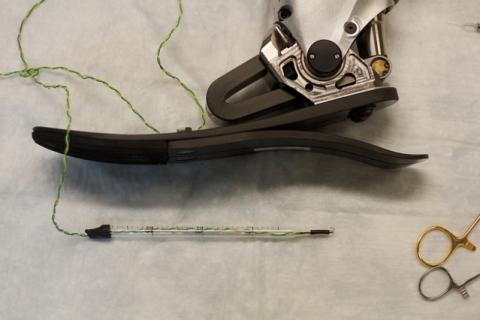
A new surgical technique devised by MIT researchers could allow prosthetic limbs to feel much more like natural limbs. Through coordination of the patient’s prosthetic limb, existing nerves, and muscle grafts, amputees would be able to sense where their limbs are in space and to feel how much force is being applied to them.
This type of system could help to reduce the rejection rate of prosthetic limbs, which is around 20 percent.
“We’re talking about a dramatic improvement in patient care,” says Hugh Herr, a professor of media arts and sciences and the senior author of the study. “Right now there’s no robust neural method for a person with limb amputation to feel proprioceptive positions and forces applied to the prosthesis. Imagine how that would completely hinder one’s ability to move, to successfully balance, or to manipulate objects.”
In the new study, which appears in Science Robotics on May 31, the researchers demonstrated in rats that their technique generates muscle-tendon sensory feedback to the nervous system, which should be able to convey information about a prosthetic limb’s placement and the forces applied to it. They now plan to begin implementing this approach in human amputees, including Herr, whose legs were amputated below the knee when he was 17.
Shriya Srinivasan, a graduate student in the Harvard-MIT Program in Health Sciences and Technology (HST), is the paper’s lead author. Other authors are Media Lab visiting scientist Matthew Carty, MIT undergraduate Peter Calvaresi, HST graduate students Tyler Clites and Benjamin Maimon, Media Lab graduate student Cameron Taylor, and recent Ph.D. recipient Anthony Zorzos.
http://news.mit.edu/2017/making-prosthetic-limbs-feel-more-natural-0531